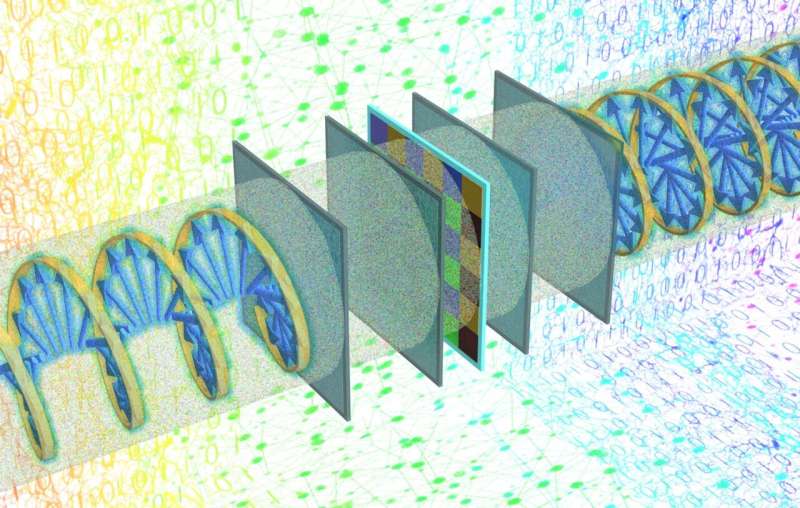
Modern information processing systems rely on large-scale linear transformations or matrix computations. Digital computer systems need to complete billions of matrix operations per second to perform complex computational tasks. The performance and capacity of the underlying computing systems can be influenced by the throughput of linear transform computations. The linear transformations are computed using digital processors in computers, which can face problems as the data gets larger and larger. All-optical computing methods can potentially provide a remedy here.
Researchers from the University of California, Los Angeles (UCLA) have demonstrated a diffractive optical processor to enable high-speed, low-power computation of multiple linear transformations. The optical processor uses a series of structured diffractive surfaces and simple polarizer array to manipulate the input light and generate at the output plane, the result of any desired complex-valued linear transformation of the input field. A major advantage of this all-optical diffractive processor over its conventional electronic counterparts is that it does not need any computing power and can be scaled up to handle large input data by fabrication of wide-area wafers that compute in parallel. The light propagation through a thin diffractive volume makes the execution of complex-valued linear transformations extremely fast.
Professor Aydogan Ozcan from the electrical and computer engineering department at UCLA led the research. A single diffractive processor can perform up to four different linear transformations through the use of a new optical architecture. By enabling the structured surfaces to communicate with the polarization elements embedded in the diffractive volume, a single diffractive optical processor can form multiple distinct computation channels, each of which can be accessed using a specific combination of the input and output polarization states. After being trained through data-driven approaches such as deep learning, the diffractive processor can all-valuedly compute a group of complex-optical linear transformations, which can be assigned to perform different computational tasks. A single diffractive optical processor can be loaded with a wide range of tasks at the same time.
The UCLA research team claims that their diffractive optical processor can work at different parts of the spectrum. This design can be used to build intelligent passive optical front-ends for machine vision systems since it can directly process the phase and amplitude information of an input scene. The inherent capability of this system to process input polarization information of a sample or scene might also enable its applications in polarization-aware optical image and sense, which could be useful for certain applications such as the detection of birefringent crystals in bodily fluids.
More information: Jingxi Li et al, Polarization multiplexed diffractive computing: all-optical implementation of a group of linear transformations through a polarization-encoded diffractive network, Light: Science & Applications (2022). DOI: 10.1038/s41377-022-00849-x Journal information: Light: Science & Applications Citation: All-optical computation of a group of transformations using a polarization-encoded diffractive network (2022, May 26) retrieved 26 May 2022 from https://phys.org/news/2022-05-all-optical-group-polarization-encoded-diffractive-network.html This document is subject to copyright. Apart from any fair dealing for the purpose of private study or research, no part may be reproduced without the written permission. The content is provided for information purposes only.